
scrounge: /skrounj/ informal verb: to actively seek [books] from any available source
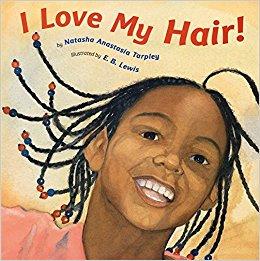
I Love My Hair! is a book that portrays a girl named Keyana getting her hair brushed by her mother. It hurts and she doesn't like it, but when her mother is done, she reminds her that her hair is beautiful and she can wear it in any style she chooses.
This is a celebration of African hair, and I love the visual metaphors of different styles, such as "cornrows" showing her hair blending into a cornfield -- we also see other styles such as braids with beads, and the natural style, described as letting her hair go "any way it pleases."
Toward the end, the voice changes to Keyana's: "I love my hair, because it is thick as a forest, soft as cotton candy." She says her favorite style is one ponytail on each side of her head, like wings, and that one day she might take off and fly!
Scrounged From: Our local library
Format: Paperback
Author: Natasha Anastasia Tarpley
Illustrator: E.B. Lewis
Pages: 32
Content Advisory: None
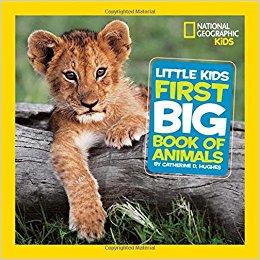
Little Kids First Big Book of Animals is a great book from National Geographic that introduces kids to many different kinds of animals all over the world. The book organizes the animals by the type of environment they live in: grasslands, the desert, the sea, forests and jungles, and the arctic.
Each section covers several animals (some more than others), with one or two double pages devoted to each animal. There are lots of great photographs, simple text, and an emphasis on the relationship between parents and baby animals. Some of the animals included are: snakes, giraffes, snowy owls, zebras, spiders, desert jerboas, penguins, raccoons, gorillas, koalas, dolphins, and more.
This book can be read all at once if the child's attention span is long enough, but could also be read in sections for use in a science or geography unit. My five-year-old son says about it:
"It's nice and long and I like to sit and read it. It has beavers in it. They chop up wood to make their dam. The animal I like the most is an octopus. It has a siphon under it that goes into the water with it."
Scrounged From: Books-a-Million
Format: Hardcover
Author: Catherine D. Hughes
Pages: 128
Content Advisory: None
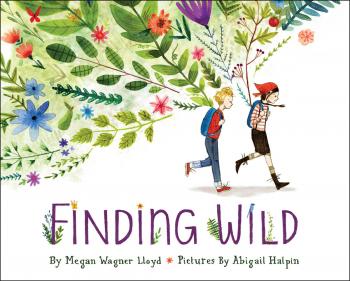
Finding Wild is a short, simple, and lyrical "concept book" that celebrates the idea of "wild." What is it? Where do you find it? The answers aren't straightforward, but with enough examples and adjectives, as well as beautiful, evocative images of a pair of children exploring the outdoors, we start to get a picture of this word.
Wild can be dangerous -- it can have teeth, or sting, or prick your finger. But it can also be soft and sweet-smelling, producing berries and beautiful flowers.
Toward the end we see how much harder it can be to "find wild" in cities that are orderly and covered in concrete. But wild is still there -- if we look for it!
Scrounged From: Our local library
Format: Hardcover
Author: Megan Wagner Lloyd
Illustrator: Abigail Halpin
Pages: 32
Content Advisory: None
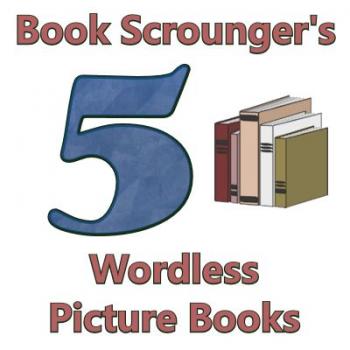
Most picture books use words and illustrations to tell a story -- but some artists are skilled at storytelling without using any words at all. Here are some of our favorites, in no particular order:
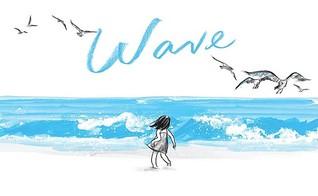
Wave, by Suzy Lee, is a simple book with a long horizontal-rectangle shape, that depicts a little girl interacting with the waves on a seashore. The vibrant blue stands out so well against the black and white, and the exuberance and curiosity is evident on the girl's face as she joyfully watches, kicks, and even taunts the waves. This is a fun book that even young children can "read" to themselves.
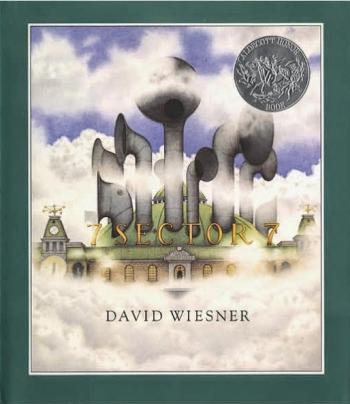
David Wiesner has written and illustrated many imaginative and detailed picture books, and Sector 7 is a wordless fantasy that seems to explore the question: What if clouds were alive? A Caldecott Honor book in 2000, this story follows a boy who goes on a school trip to the Empire State Building, where he meets a friendly cloud who takes him through the air to visit "Sector 7," a giant "assignment station" in the sky where clouds are received and dispatched to various places in various forms. But the clouds are unhappy -- they are stuck making the same boring shapes over and over again -- can the boy help them be more creative? And if he can, what will the "powers that be" think of it?
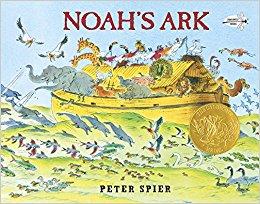
Peter Spier's Noah's Ark won the Caldecott Medal in 1978. Aside from some introductory text, it wordlessly tells the biblical tale of Noah and his floating menagerie. It's fun to see the ways in which he envisions so many animals living together during a flood. By the end of the story, I can really feel the relief and freedom that comes when the ark door opens and everyone is finally free to go their own way.
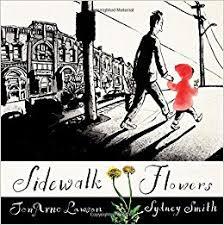
Sidewalk Flowers, by JonArno Lawson, is full of beautiful black-and-white illustrations that gradually gain more color as the story progresses. The images follow a father and daughter out for a walk. The daughter notices little things that her father does not seem to see -- such as flowers growing up through cracks in the sidewalk and other places. It's a celebration of beauty, and of the natural curiosity of a child, as well as her care and compassion for the lonely things that adults have learned to simply pass by.
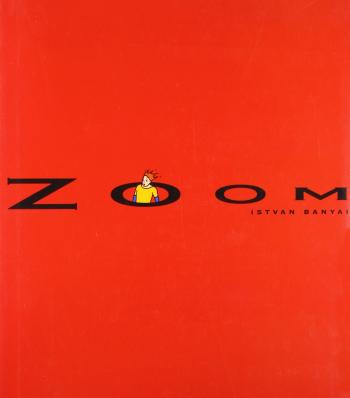
Zoom, by Istvan Banyai, is a clever book that simply shows us one image after another, and each time the frame is zoomed out a bit. After a while, we realize that some of the things that seem to be people are simply photos, or otherwise different than initially thought. By the time it's finished, it's hard to fathom how far away it is from the beginning. Each page contains a blank page on the left, and the image on the right, to keep from spoiling any surprises. This is one of the few books out there that is just as fun to "read" backwards!
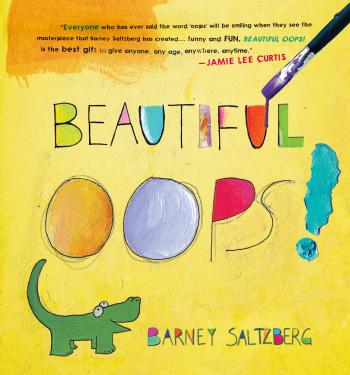
Beautiful Oops! is a board book with bright colors, flaps to open, and other fun features, which communicates the idea that when being creative it's okay to mess up. Rather than coming right out and saying "It's okay to mess up" though, the book gives examples of how seeming mistakes or imperfections can be used as a starting point to create something wonderful.
Whether it's a stain from a coffee mug, a tear in paper, a smudge of paint, of even a wadded up piece of paper, everything has potential if you choose to see it that way. This book's mixed media images and interactive features work well together to help children view their art in a more positive way (in the tradition of Peter Reynolds' Creatrilogy), as something with potential rather than simply a rote task with only one possible outcome. A fun book for young kids, and possibly older ones as well! (Some of the elements in the book might not work out well with toddlers who don't yet know how to treat books "gently," so parents may want to play it by ear.)
Scrounged From: Amazon (a Christmas present for our five-year-old)
Format: Board book
Author/Illustrator: Barney Saltzberg
Pages: 28
Content Advisory: None

